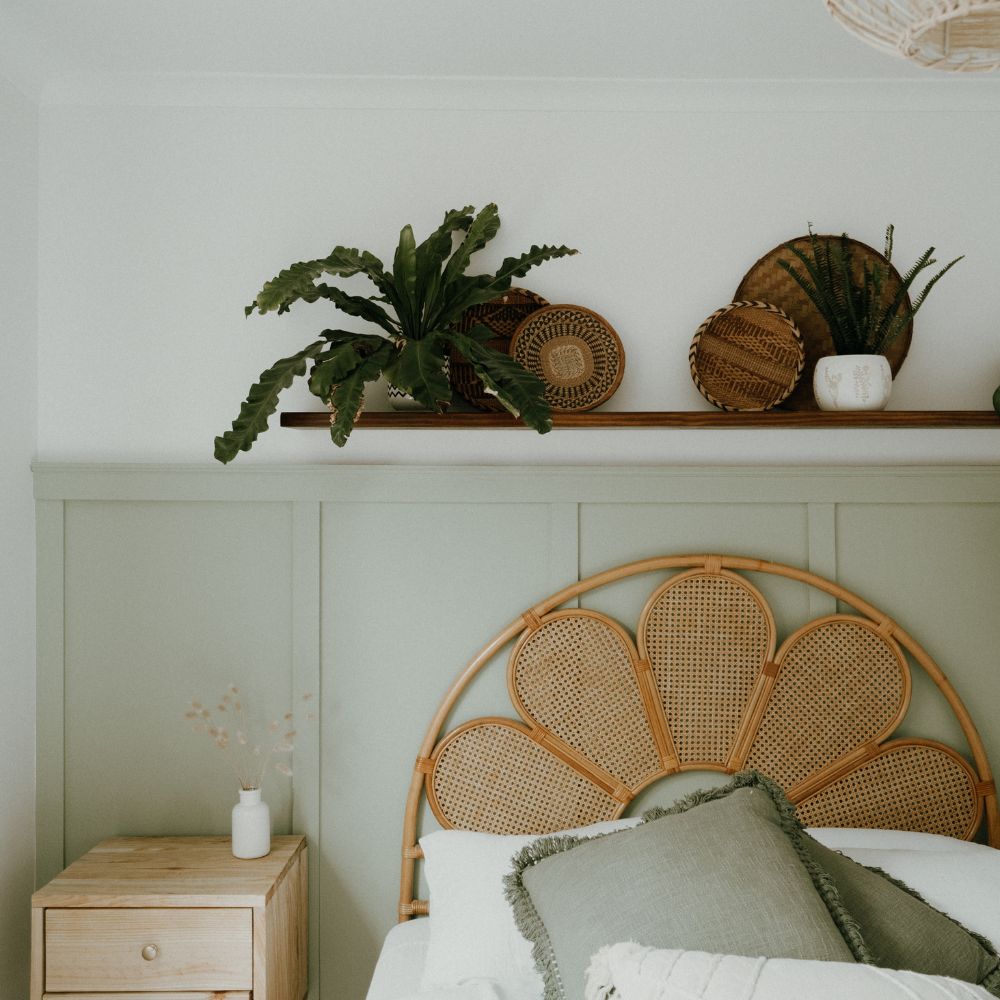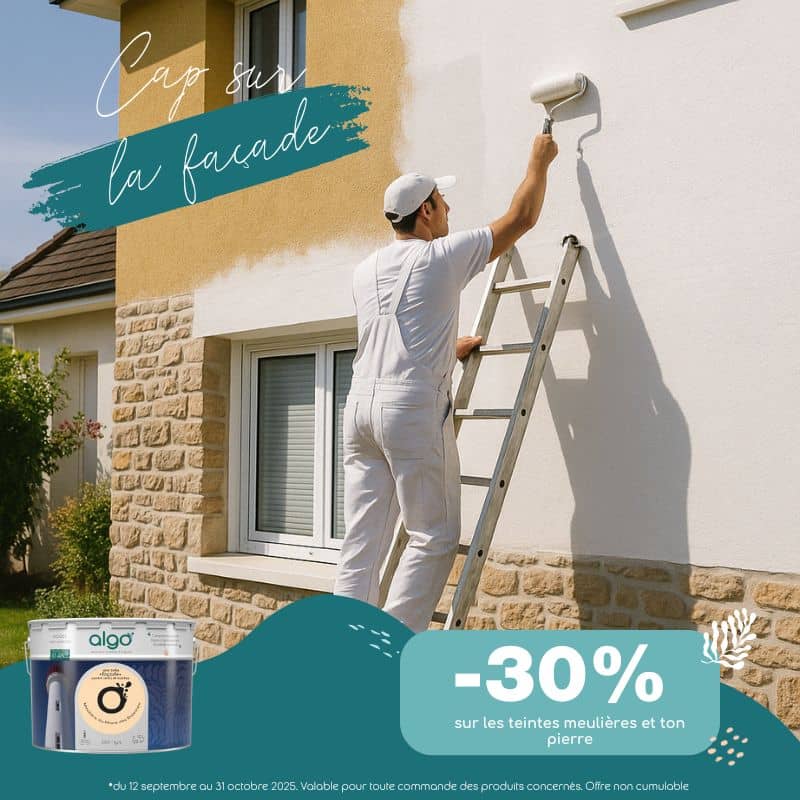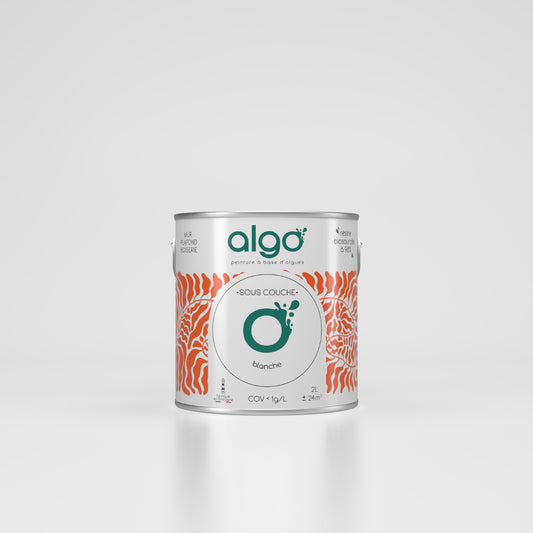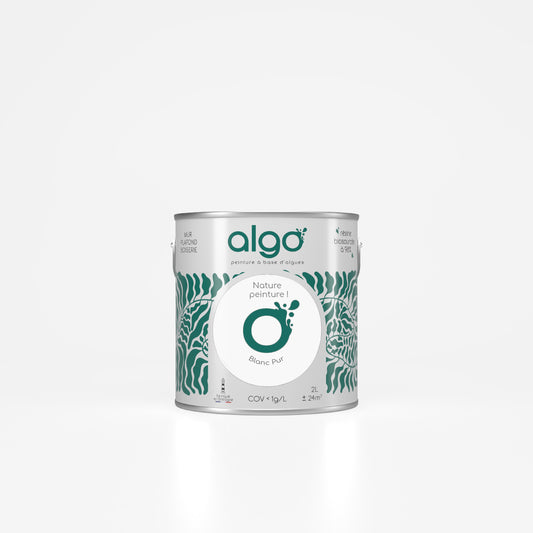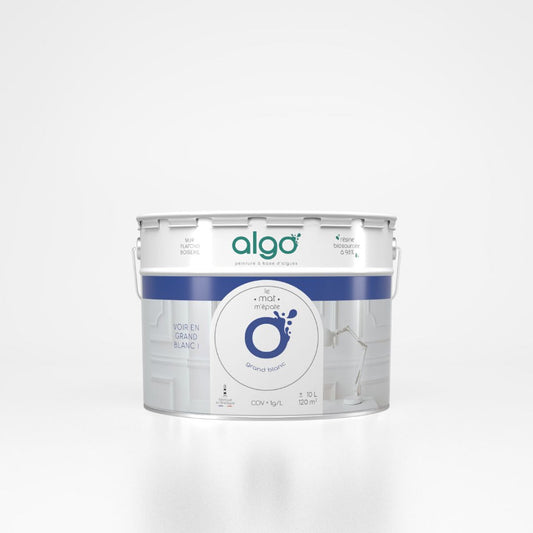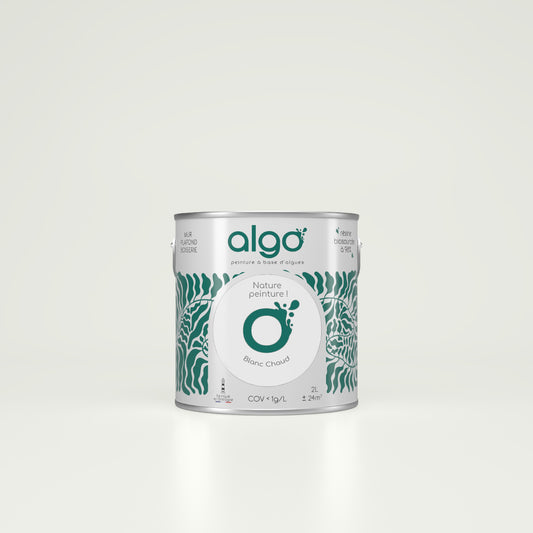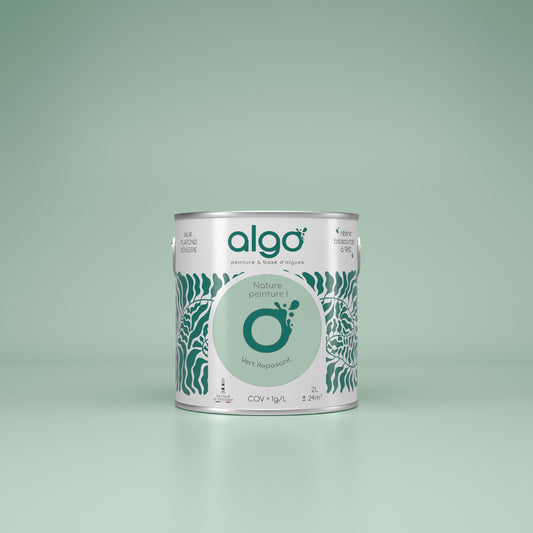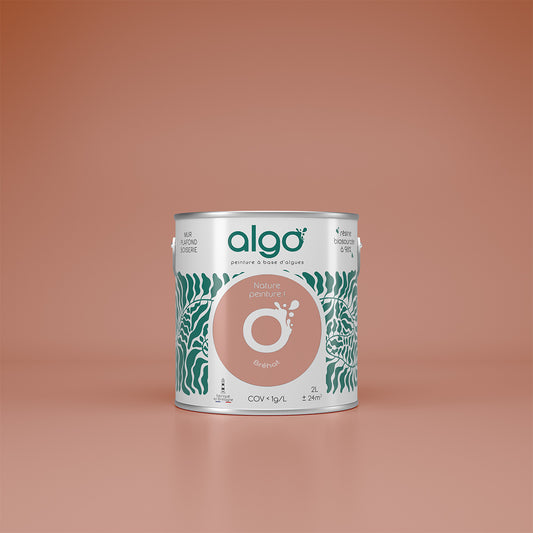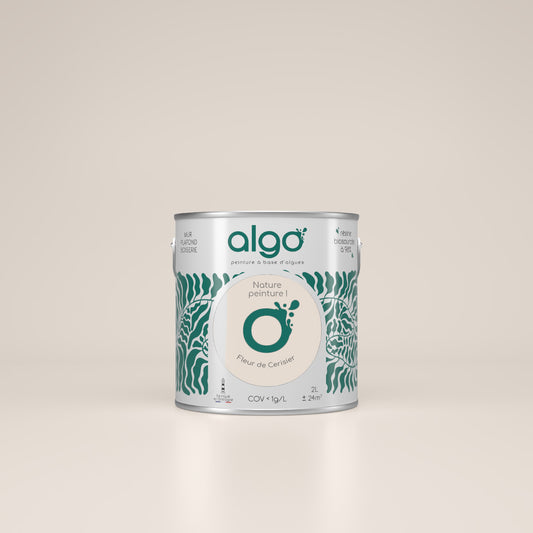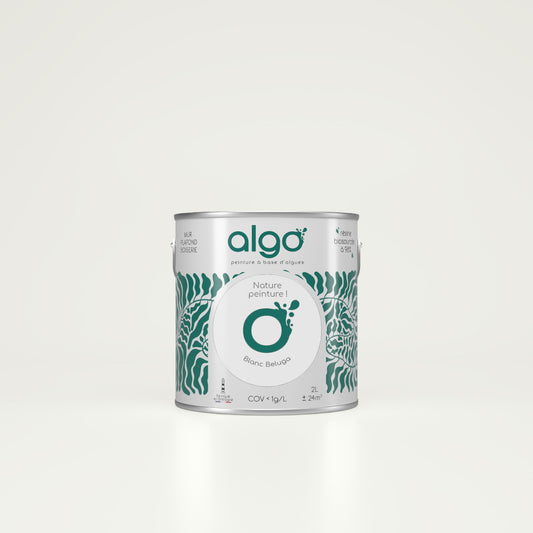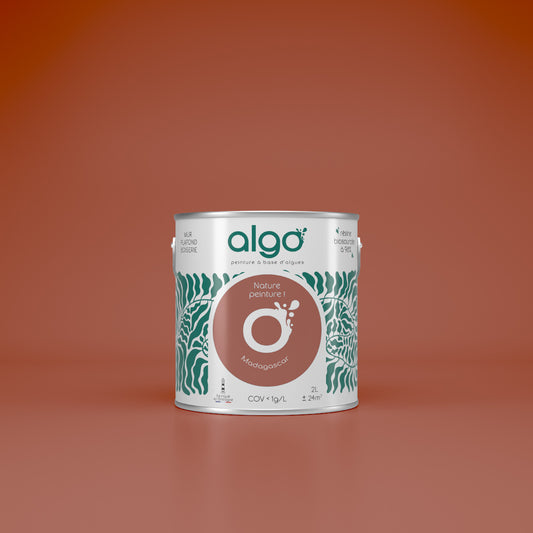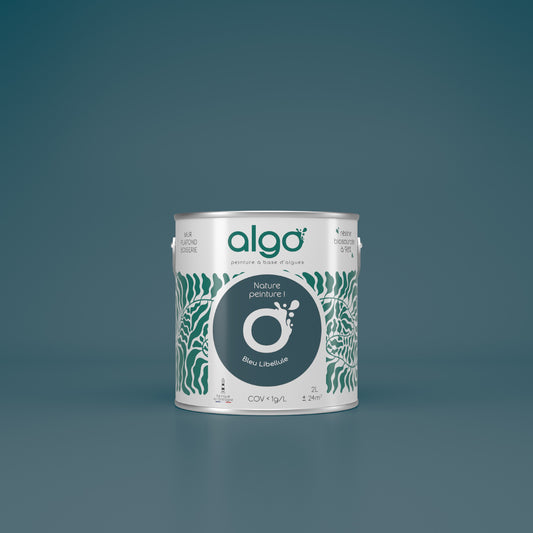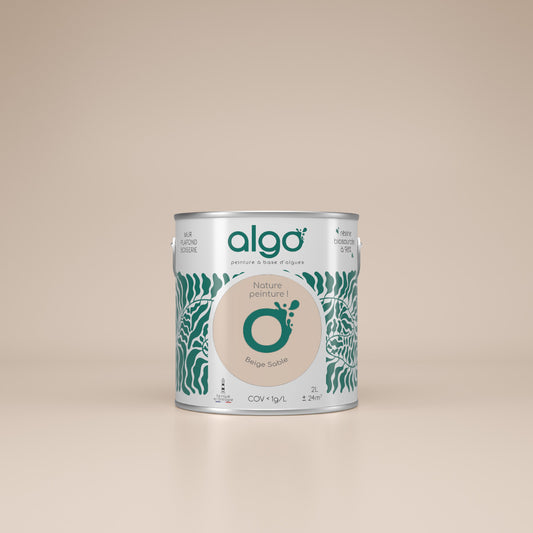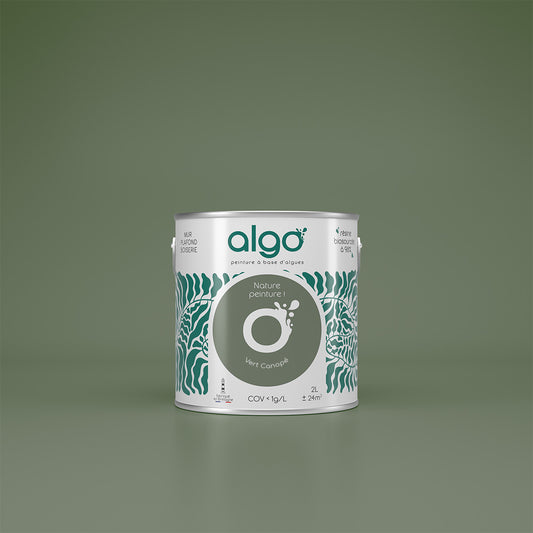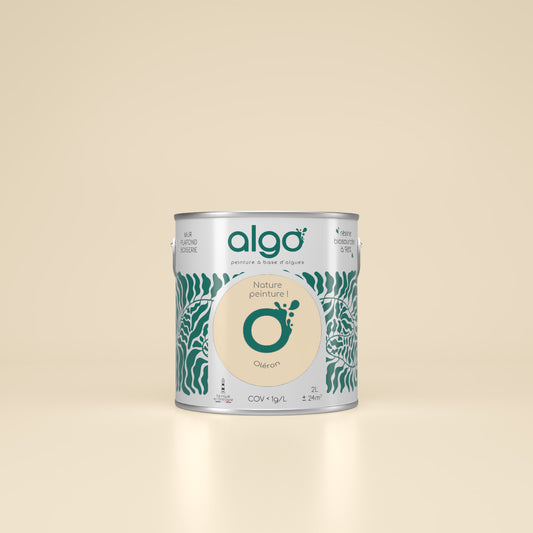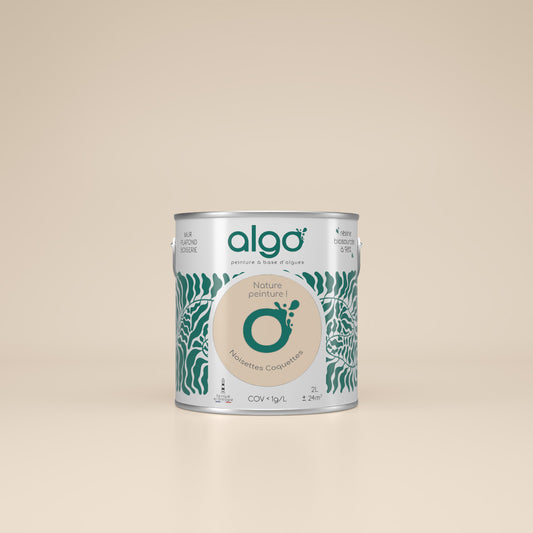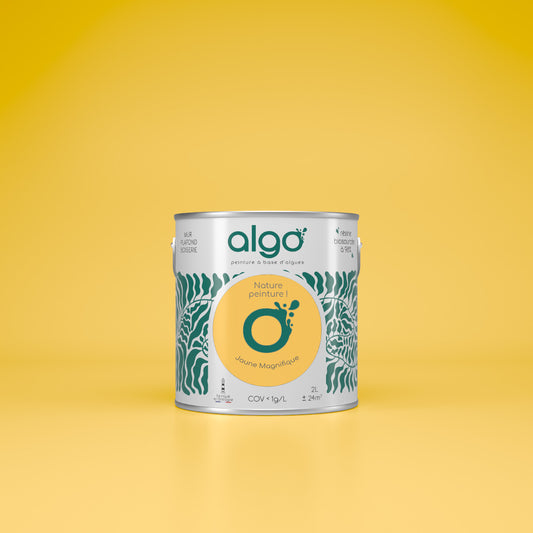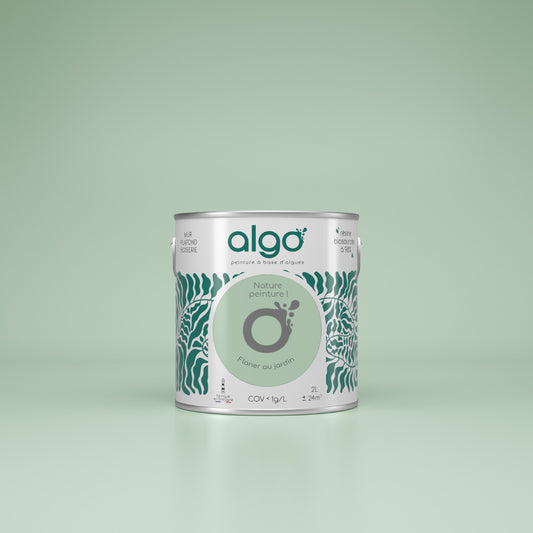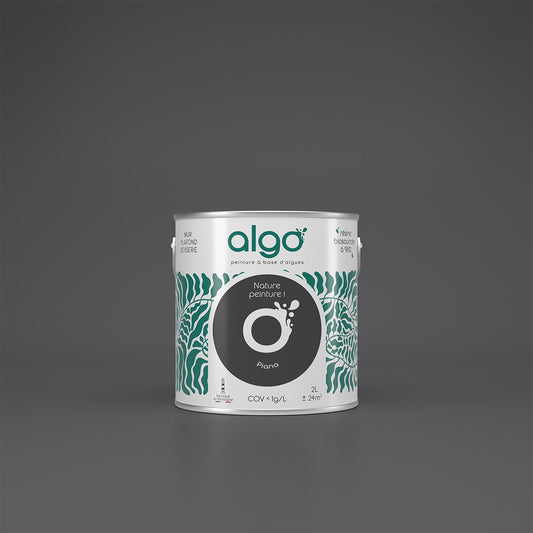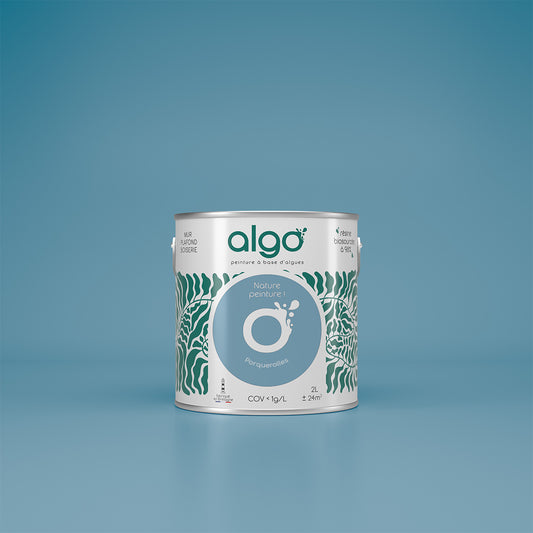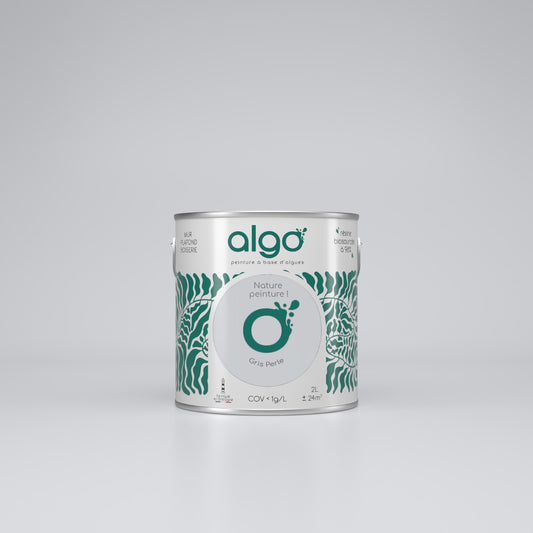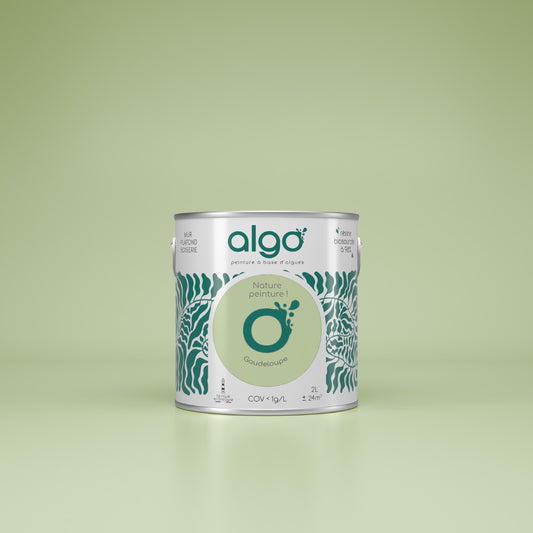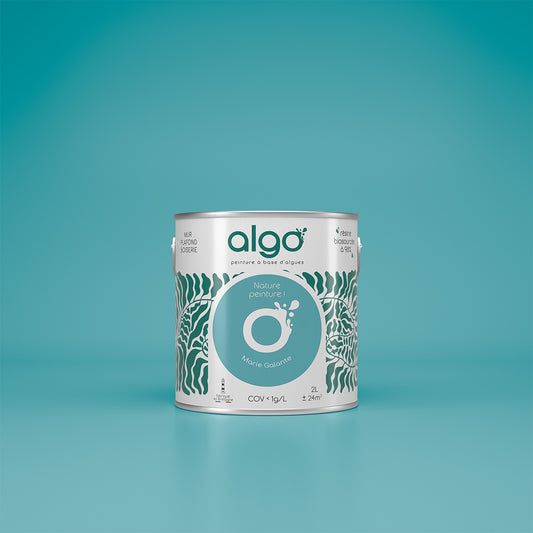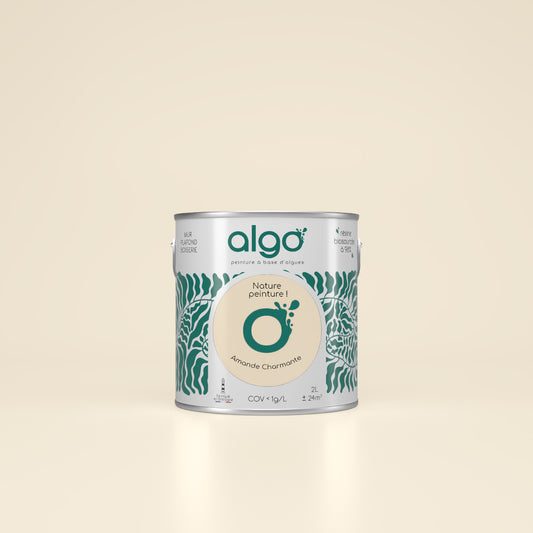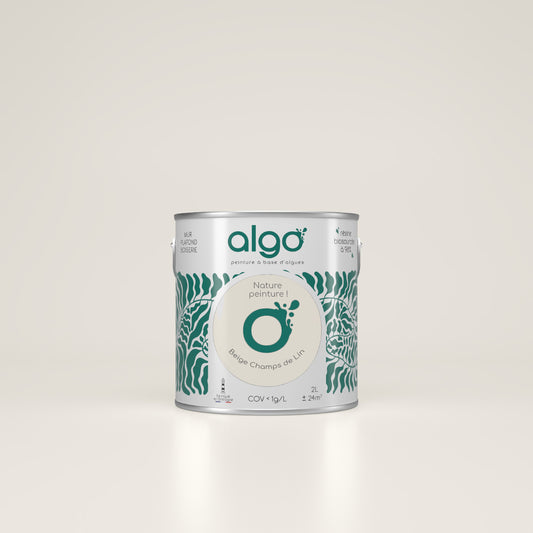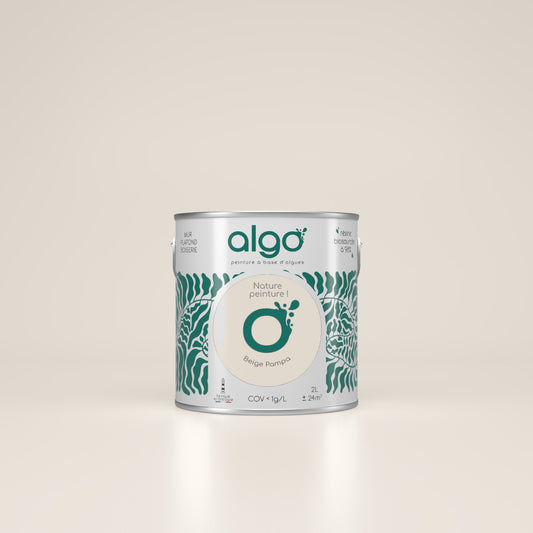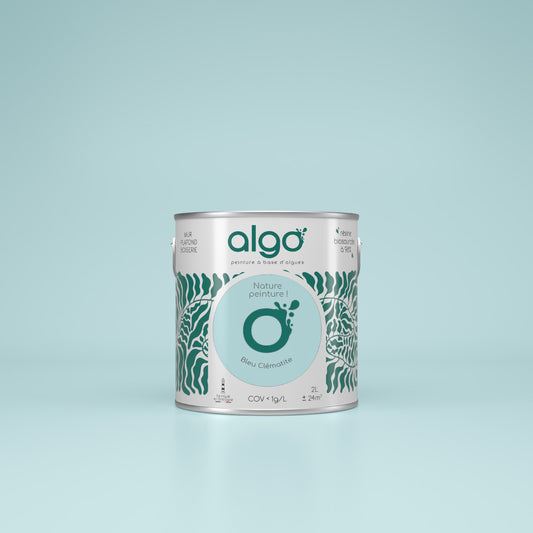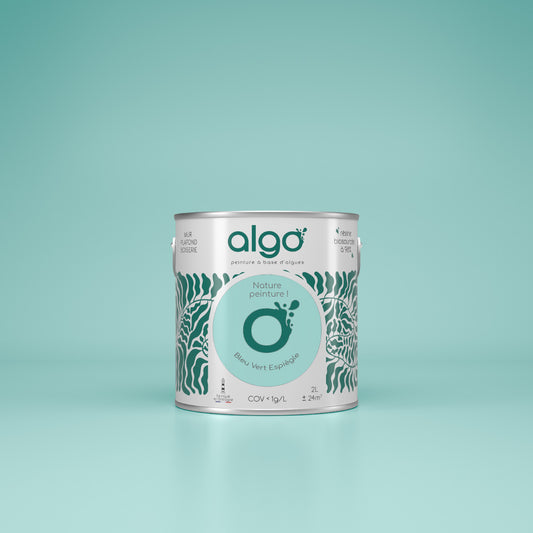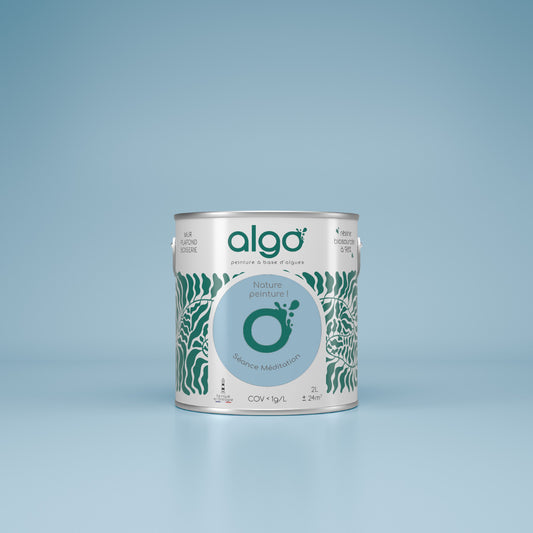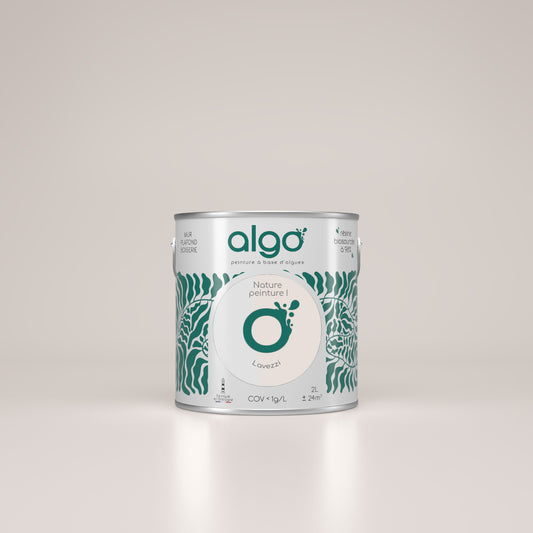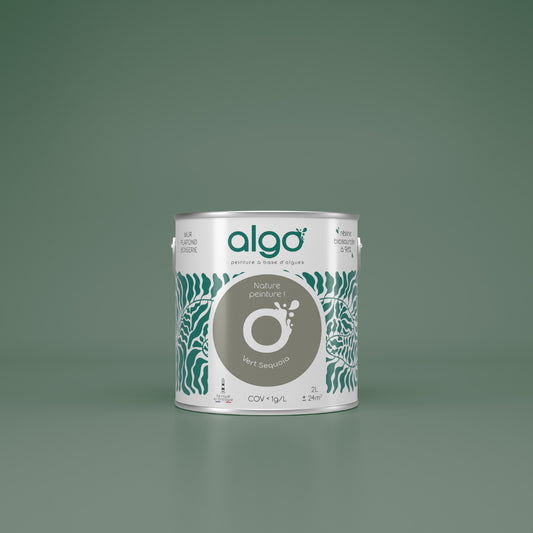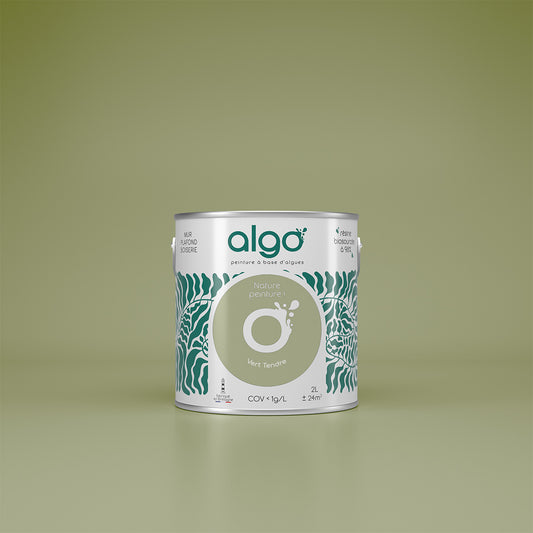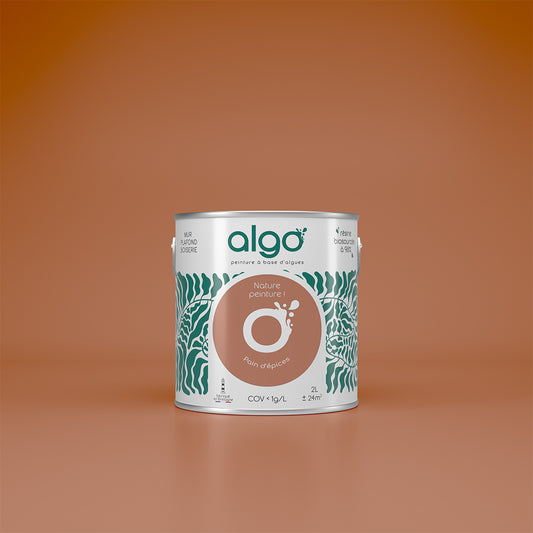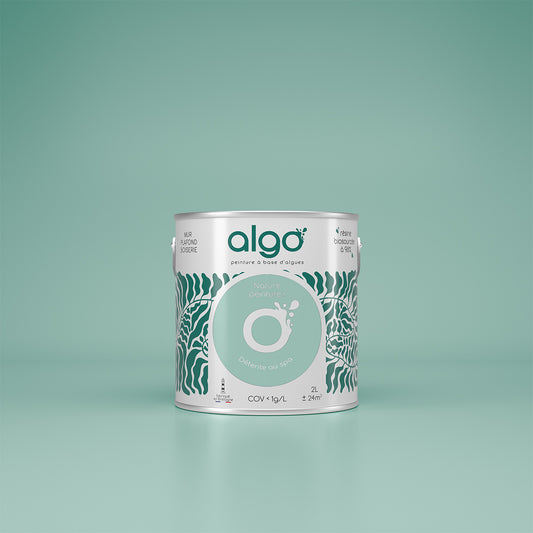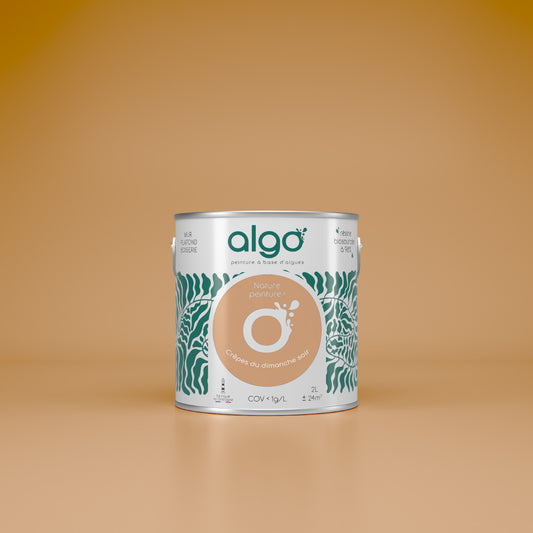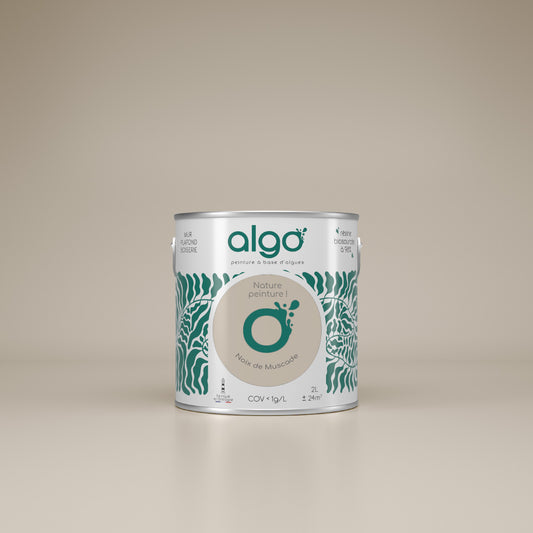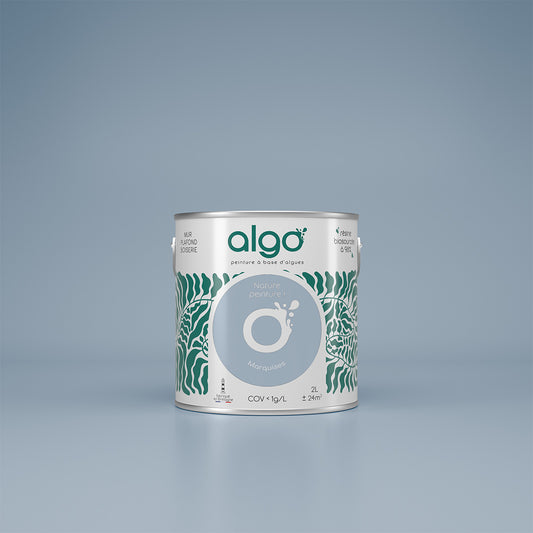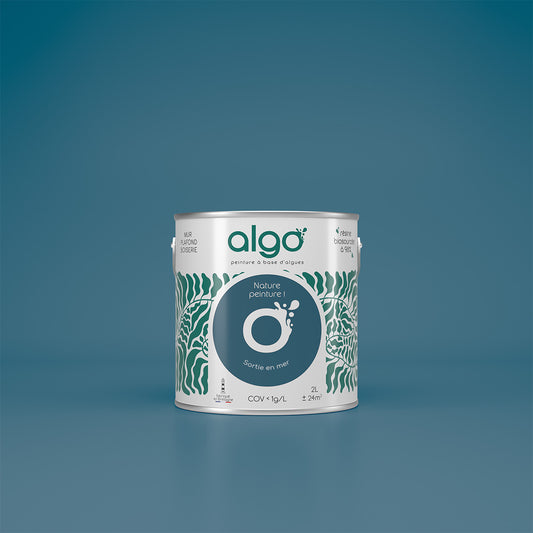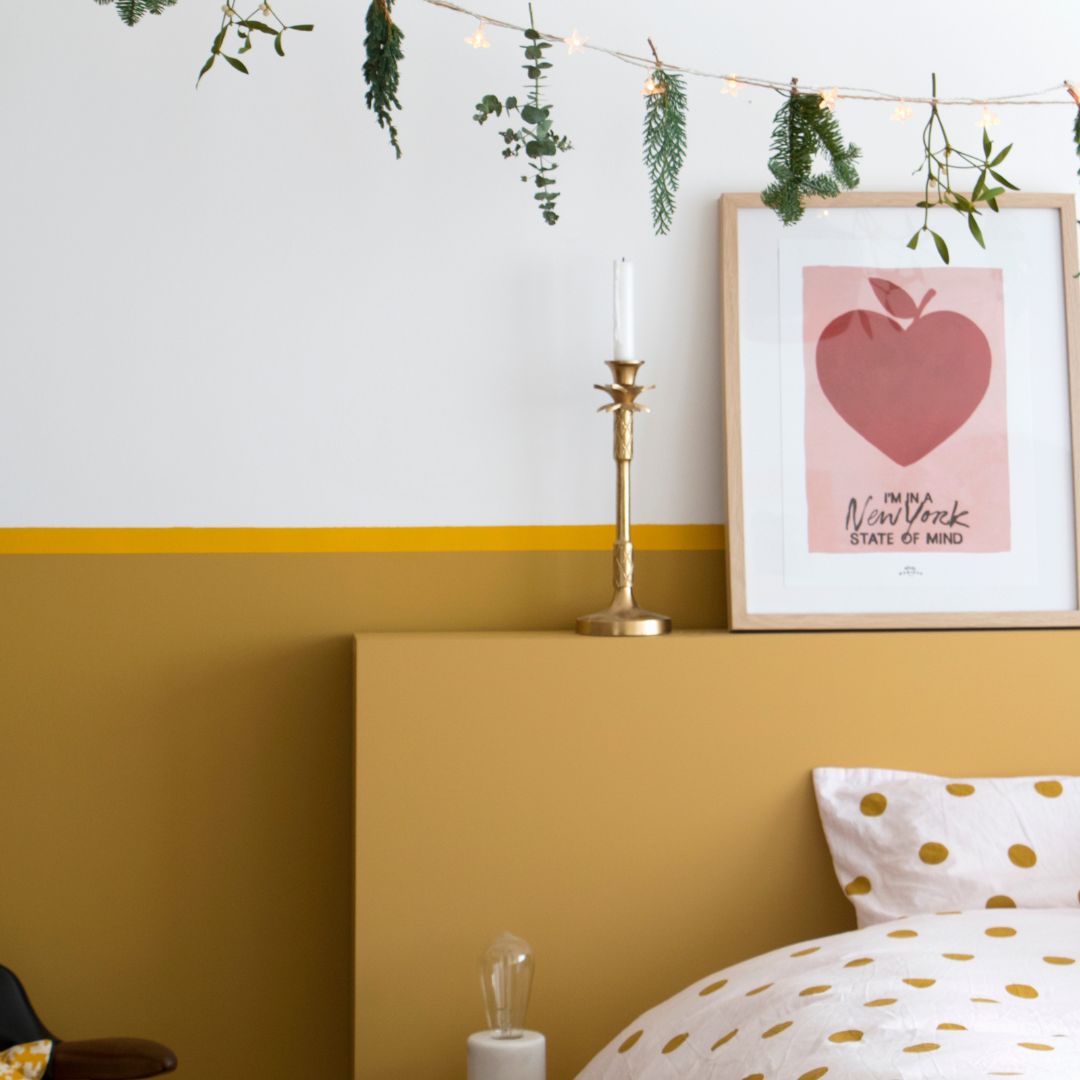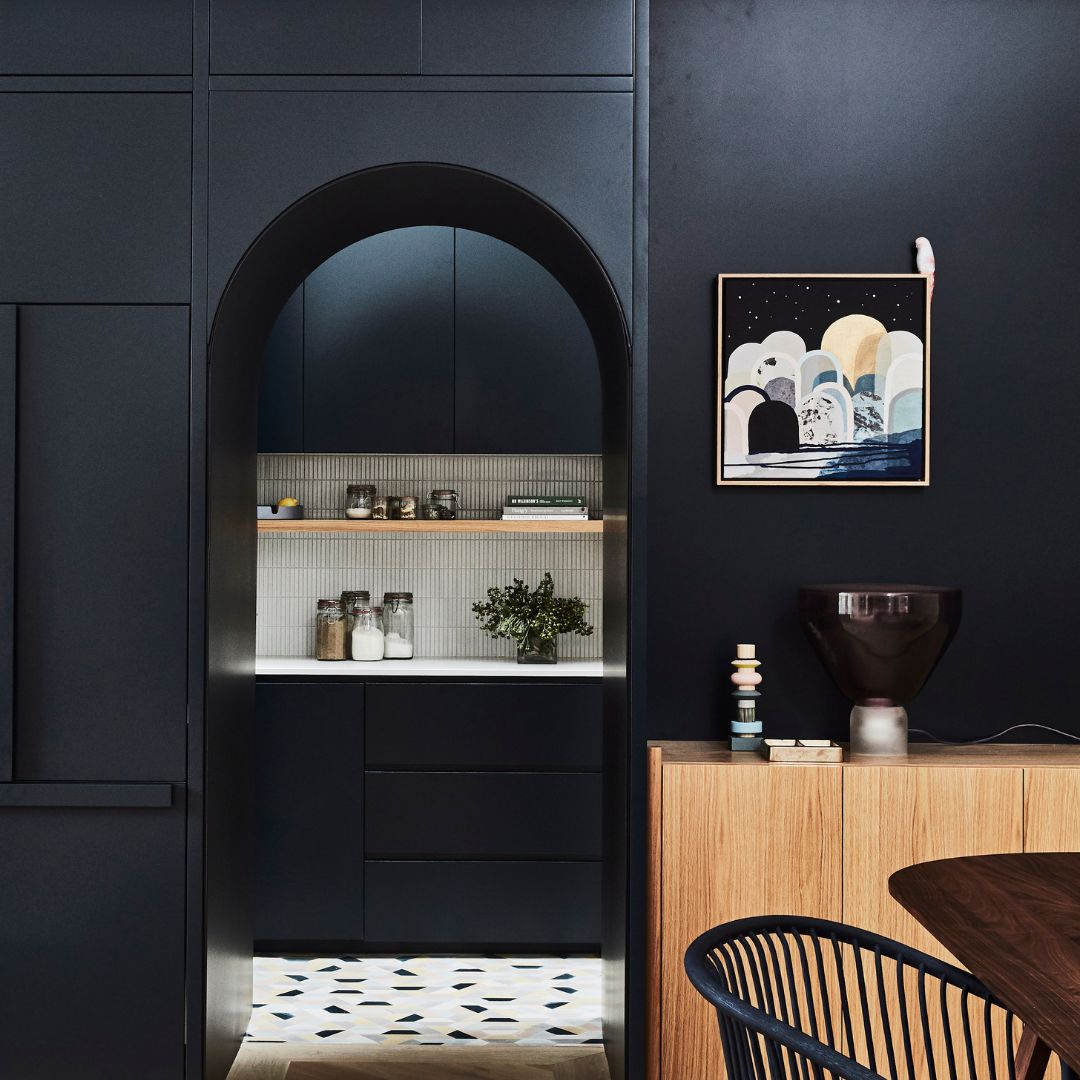-
Algo ecological underlay
Regular price from From 16,50 € ttcRegular priceUnit price 9,90 € ttc per l19,90 € ttcSale price From 16,50 € ttcSale -
Algo Eco-Friendly Paint - Pure White
Regular price from From 22,90 € ttcRegular priceUnit price 11,40 € ttc per l -
Algo Eco-Friendly Paint - Grand Blanc
Regular price from From 59,90 € ttcRegular priceUnit price 11,98 € ttc per l0,00 € ttcSale price From 59,90 € ttc -
Algo Eco-Friendly Paint - Warm White
Regular price from From 23,90 € ttcRegular priceUnit price 47,80 € ttc per l -
Algo Eco-Friendly Paint - Relaxing Green
Regular price from From 19,90 € ttcRegular priceUnit price 47,00 € ttc per l25,90 € ttcSale price From 19,90 € ttcSale -
Algo Eco-Friendly Paint - Bréhat Pink
Regular price from From 19,90 € ttcRegular priceUnit price 47,00 € ttc per l25,50 € ttcSale price From 19,90 € ttcSale -
Algo Eco-Friendly Paint - Cherry Blossom Beige
Regular price from From 19,90 € ttcRegular priceUnit price 47,00 € ttc per l25,50 € ttcSale price From 19,90 € ttcSale -
Algo Eco-Friendly Paint - Beluga White
Regular price from From 19,90 € ttcRegular priceUnit price 47,00 € ttc per l0,00 € ttcSale price From 19,90 € ttc -
Algo Eco-Friendly Paint - Terracotta Madagascar
Regular price from From 24,90 € ttcRegular priceUnit price 49,80 € ttc per l -
Algo Eco-Friendly Paint - Dragonfly Blue
Regular price from From 19,90 € ttcRegular priceUnit price 49,80 € ttc per l26,90 € ttcSale price From 19,90 € ttcSale -
Algo Eco-Friendly Paint - Sand Beige
Regular price from From 19,90 € ttcRegular priceUnit price 47,00 € ttc per l25,50 € ttcSale price From 19,90 € ttcSale -
Algo Eco-Friendly Paint - Canopy Green
Regular price from From 19,90 € ttcRegular priceUnit price 51,80 € ttc per l26,90 € ttcSale price From 19,90 € ttcSale -
Algo Eco-Friendly Paint - Oléron Beige
Regular price from From 23,50 € ttcRegular priceUnit price 47,00 € ttc per l -
Algo Eco-friendly Paint - Coquette Hazelnut Beige
Regular price from From 19,90 € ttcRegular priceUnit price 47,00 € ttc per l25,50 € ttcSale price From 19,90 € ttcSale -
Algo Eco-Friendly Paint - Magnificent Yellow
Regular price from From 23,50 € ttcRegular priceUnit price 47,00 € ttc per l23,50 € ttcSale price From 23,50 € ttc -
Algo Eco-Friendly Paint - Green Stroll in the Garden
Regular price from From 23,50 € ttcRegular priceUnit price 26,45 € ttc per l -
Algo Eco-Friendly Paint - Piana Black
Regular price from From 19,90 € ttcRegular priceUnit price 51,80 € ttc per l26,90 € ttcSale price From 19,90 € ttcSale -
Algo ecological paint - Terracotta Ponziane
Regular price from From 19,90 € ttcRegular priceUnit price 49,80 € ttc per l26,90 € ttcSale price From 19,90 € ttcSale -
Algo Eco-Friendly Paint - Porquerolles Blue
Regular price from From 19,90 € ttcRegular priceUnit price 49,00 € ttc per l25,50 € ttcSale price From 19,90 € ttcSale -
Algo Eco-Friendly Paint - Pearl Grey
Regular price from From 19,90 € ttcRegular priceUnit price 49,00 € ttc per l25,50 € ttcSale price From 19,90 € ttcSale -
Algo Eco-Friendly Paint - Vert Guadeloupe
Regular price from From 23,50 € ttcRegular priceUnit price 47,00 € ttc per l -
Algo Eco-Friendly Paint - Marie-Galante Blue
Regular price from From 23,50 € ttcRegular priceUnit price 49,00 € ttc per l -
Algo Eco-Friendly Paint - Charming Almond Beige
Regular price from From 23,50 € ttcRegular priceUnit price 47,00 € ttc per l -
Algo Eco-Friendly Paint - Linen Field Beige
Regular price from From 23,50 € ttcRegular priceUnit price 47,00 € ttc per l -
Algo Eco-Friendly Paint - Pampa Beige
Regular price from From 23,50 € ttcRegular priceUnit price 47,00 € ttc per l -
Algo Eco-Friendly Paint - Clematis Blue
Regular price from From 23,50 € ttcRegular priceUnit price 49,00 € ttc per l -
Algo Eco-Friendly Paint - Playful Blue-Green
Regular price from From 23,50 € ttcRegular priceUnit price 47,00 € ttc per l -
Algo Eco-Friendly Paint - Meditation Session Blue
Regular price from From 23,50 € ttcRegular priceUnit price 47,00 € ttc per l -
Algo Eco-Friendly Paint - Lavezzi Beige
Regular price from From 23,50 € ttcRegular priceUnit price 26,45 € ttc per l -
Algo Eco-Friendly Paint - Sequoia Green
Regular price from From 19,90 € ttcRegular priceUnit price 51,80 € ttc per l26,90 € ttcSale price From 19,90 € ttcSale -
Algo Eco-Friendly Paint - Arctic Polar Bear
Regular price from From 23,50 € ttcRegular priceUnit price 47,00 € ttc per l -
Algo Eco-Friendly Paint - Cream Beige
Regular price from From 23,50 € ttcRegular priceUnit price 47,00 € ttc per l -
Algo Eco-Friendly Paint - Exquisite Mirabelle Yellow
Regular price from From 19,90 € ttcRegular priceUnit price 49,00 € ttc per l25,50 € ttcSale price From 19,90 € ttcSale -
Algo Eco-Friendly Paint - Soft Green
Regular price from From 23,50 € ttcRegular priceUnit price 47,00 € ttc per l -
Algo Eco-Friendly Paint - Gingerbread Brown
Regular price from From 24,90 € ttcRegular priceUnit price 49,80 € ttc per l -
Algo Eco-Friendly Paint - Green Spa Relaxation
Regular price from From 23,50 € ttcRegular priceUnit price 47,00 € ttc per l -
Algo Eco-Friendly Paint - Brown Sunday Night Pancakes
Regular price from From 23,50 € ttcRegular priceUnit price 47,00 € ttc per l -
Algo Eco-Friendly Paint - Nutmeg Beige
Regular price from From 23,50 € ttcRegular priceUnit price 47,00 € ttc per l -
Algo Eco-Friendly Paint - Marquises Blue
Regular price from From 23,50 € ttcRegular priceUnit price 47,00 € ttc per l -
Algo Eco-Friendly Paint - Sea Trip Blue
Regular price from From 24,90 € ttcRegular priceUnit price 49,80 € ttc per l
Choose your colors with ease
-

Find the perfect shades with our color consultant
Book your free coaching -

Easily choose your shades with our samples
See our 100 samples -
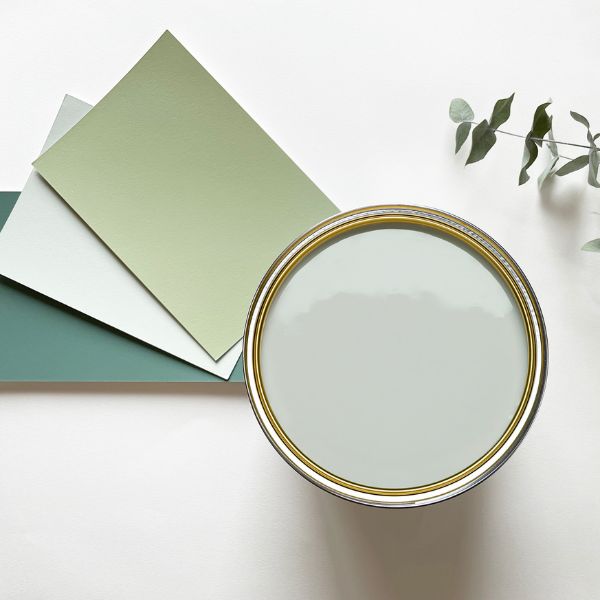
Fall for our magnificent color harmonies
See our color harmonies
-

Fast delivery
and neat -

A service
top customer! -

More than 2000
verified reviews -

Payment
secure
The satin finish is undoubtedly the number 1 option regardless of the surface to be painted for interior painting projects.
Whatever the room, satin paint will be the best choice for your walls, unless they have any rough spots or imperfections.
Combining aesthetic and technical qualities, satin is a must-have for any range of paint.
Satin: a product with many advantages
The first undeniable advantage of the satin finish is the aesthetics it offers when applied. While some people think this paint is too shiny, sometimes giving an overly lacquered effect, it is still the ideal finish to guarantee and optimize the brightness of a room.
The silky effect offered by satin allows you to capture the brightness and promote sparkle in the room.
It's simple: satin is simply a must-have, regardless of the surface or the room in which you plan to carry out work. On a wall, ceiling, or wood; satin is the solution for all universal surfaces.
The resistance offered by satin is also largely to its advantage: in wet rooms in particular, where a satin finish will guarantee a certain durability of the support but also be able to withstand daily stresses in the room (humidity, water splashes, etc.)
If you want a washable paint at all costs: the washable nature of satin is a key criterion when choosing a finish. Here too, satin is probably the most washable solution on the market, thus justifying its application in more sensitive areas with high traffic.
One small drawback is that satin isn't always suitable for ceilings, unlike matte. Professionals therefore advise caution when applying it to your ceilings.
A wide choice of colors available
Our satin paint is available in 100 shades, giving you a wide choice to choose the color that suits your interior.
Light and neutral tones will help amplify the brightness of your room. This is particularly true for white, beige, and to a lesser extent, gray. Brighter colors are recommended for accentuating or delineating a specific area of a room.
Please note that, aside from the aesthetic effect, the finish will have no impact on the color you choose for your painting project. Only the characteristics related to the type of room, such as its exposure, size, and the natural light it receives, will affect the color rendering.
How to paint a satin finish?
While the application process remains similar to any other finish, it is important to be thorough when applying the satin finish whether the surface is new or being renovated.
It will be essential to have a support with as few rough spots as possible because the satin will not hide the defects of the support.
Preparation of the surface is necessary, with the application of a coating to fill holes and cracks.
While it may be tempting to carry out your work with a single coat of paint, we always recommend applying one coat of primer and two coats of finish for optimal results.
You can get more information about the paint by consulting the product data sheet before you start.
Our professional advice on satin paint:
Painting a ceiling:
We recommend not applying satin paint to ceilings as it highlights imperfections in the substrate due to the grazing light from lighting in a room.
Generally, flat paint is preferable for ceilings because it has a more discreet and uniform finish that helps camouflage surface defects such as cracks, dents or imperfections, which is very useful on ceilings.
Less bright, the matte look will make more sense.
However, satin paint is an excellent option for walls and woodwork, especially in high-traffic areas where walls may be subject to wear, dirt, and stains. Satin paint provides better stain resistance and makes cleaning and maintenance easier.
Maintaining the paint:
To maintain the vibrant appearance of your satin paint, it's important to maintain your walls regularly. Depending on the depth and maintenance requirements, you may not need any special products.
A soft cloth and soapy water will be sufficient in the vast majority of cases. Be careful with surfaces that receive a lot of traffic, particularly door frames or baseboards.
What is the price per liter of a satin finish?
There are several criteria to take into account when determining the price of a liter of satin paint:
- its quality
As with any product, there are low-end products and high-quality paints, which will influence its price.
A simple acrylic paint will probably be more affordable than a quality natural paint, think about it!
- its yield per liter
This is a crucial element in the choice of paint, which also determines the selling price: the average observed coverage is 8 to 10m² per liter applied. A paint that displays a higher coverage than a conventional paint may be slightly more expensive, but you will use less paint.
- its conditioning
The larger the format you choose, the less impact the price per liter will have, which is why the price of large volumes, particularly 10 liters, always remains more affordable.
- the chosen color
White is a standard that justifies a lower price than color, regardless of the shade chosen. A satin white paint will therefore certainly cost less than a color.
